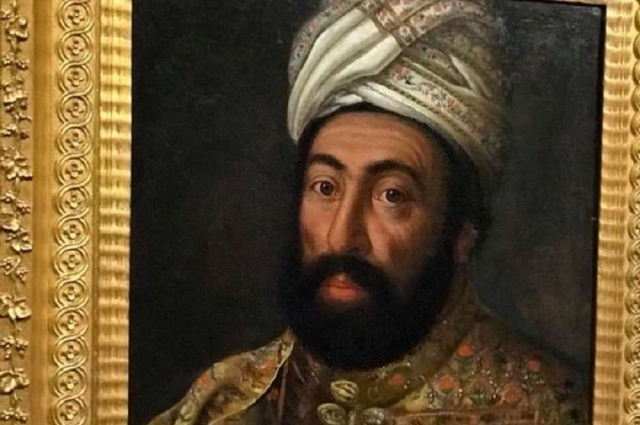Portrait of Georgian King Teimuraz II Comes Home
The portrait of Georgian King Teimuraz II, painted by Aleksandr Antropov (1716-1795), one of the most notable of the Imperial Court’s portrait artists, has been returned to Georgia after 257 years and is now being exhibited at the Art Palace museum.
Created in 1761 at the Russian Imperial court, the portrait was returned to Georgia with the help of Bidzina Ivanishvili, Chairman of the Georgian Dream party and Cartu Fund.
A gravure painting of the Georgian king was created during the same period in Russia, and was considered the King’s earliest artistic representation still preserved to this day, until the discovery of the painting.
Experts of the Art Palace led negotiations with the 1Sstibs Gallery for the purchase of the portrait and Cartu Fund bought the portrait at the price of $38,400.
The portrait is a part of the Royal Family and Collection of the Bagrationi Dynasty. The painting underwent primary inspection and restoration in Georgia, which fully confirmed all the conclusions conveyed by the foreign experts.
Biography of the King
Teimuraz II of the Bagrationi Dynasty was the King of Kakheti, eastern Georgia, from 1732 to 1744, then of Kartli from 1744 until his death. Teimuraz was also a lyric poet.
He was a son of Erekle I. Together with his mother, Teimuraz ruled as regent for his absent brother David II, from 1709 to 1715. In 1732, the Turks killed the next king and Teimuraz’s other brother, Constantine, and took control of his kingdom. Teimuraz fled to the mountains of Pshavi and fought the occupants from there.
After Kakheti fell under the nominal government of Teimuraz's Muslim nephew Ali Mirza in 1735, Teimuraz escaped to the mountains of Kakheti and fomented unrest against the Persian rule, but he was captured in 1736.
In 1738, the shah had to release Teimuraz to counter the Georgian rebellious opposition, and made him Governor of Kakheti. For his service against the Ottomans and an anti-Persian revolt, in 1744, Teimuraz was confirmed by the Shah as King of Kartli, and his son Erekle was given a Kakhetian crown. They were recognized as Christian kings for the first time since 1632.
Like several previous Georgian rulers, Teimuraz thought that the expanding Russian empire would be the only protector for Christians of the Caucasus against the Ottoman and Persian aggressions. He sent an embassy to St Petersburg in 1752, but without success.
In 1760, he visited the Russian court himself to gain support for his project of a Georgian expedition to Persia, in order to put a Russian candidate on the Shah’s throne. During this period, Antropov painted his portrait. In total, there have been only 15 paintings found by the Russian artist and all of them are considered masterpieces.
Teimuraz died suddenly in the Russian capital on January 8, 1762, and was buried next to his father-in-law Vakhtang VI in the Cathedral of the Assumption, Astrakhan.
By Thea Morrison











